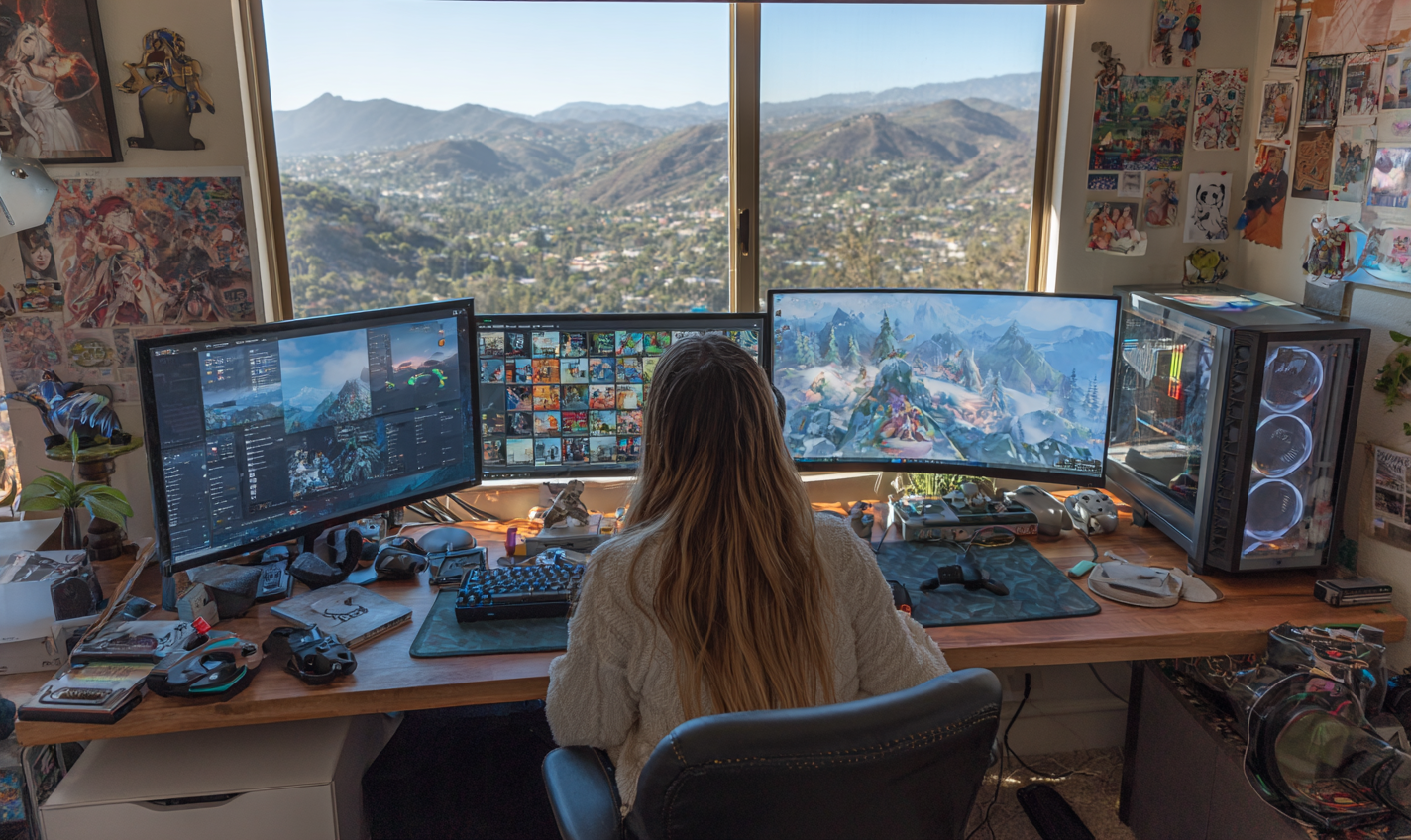For years, user-generated content has been framed as a wide-open playground where anyone can create, publish, and find an audience. But the truth is that not all players come to these platforms on equal footing. Women make up nearly half of the global gaming population, yet they face distinct challenges and opportunities when it comes to creating and sharing games. That’s why women-first UGC platforms are so interesting: they don’t just welcome women into existing spaces, they actively design the tools, communities, and discovery systems around women’s voices and creative priorities.
There are different types of women-first platforms in gaming UGC: platforms that target women as the primary user base; platforms where women creators are prioritized in tools, discovery, and monetization; platforms that focus on women’s niches such as romance, fashion, beauty, lifestyle and wellness; and platforms owned or operated by women or built around a women-centric mission.
This isn’t a “no men zone” kind of thing. These platforms are designed to amplify the voices, genres, and communities that women drive and enjoy, while still being open to everyone. The difference is in priorities: safer environments, accessible tools, and discovery systems built with women’s needs at the center, rather than as an afterthought.

In the US, gamers are roughly split by gender. ESA’s 2025 Essential Facts places the player base at 53% male and 46% female, with a small share selecting non-binary or unspecified.
Platform mix is where differences show up. Women skew mobile more than men. Newzoo’s 2024 analysis found that 44% of women players play exclusively on mobile, compared with 27% of men. That has product implications: portrait gameplay, touch-first UI, shorter session design, and ad-light or narrative-centric monetization tend to perform better. The picture is similar all around the world.
Roblox’s user base is about 44% female. This matters because fashion, decorating, social roleplay, and narrative hubs inside larger ecosystems are proven funnels for women creators and players, even when the platform isn’t women-first by design.
Women do not just want different content - they want different conditions. Harassment and bias still affect how women play, stream, and build careers in gaming. Many women minimize profile details or avoid voice in gaming to reduce harassment risk.
That’s why platforms built with women in mind go beyond genres and mechanics. They put safety tools up front, make moderation predictable, and give creators more control over how they present themselves. When women don’t have to fight through hostility just to publish or play, they can focus on what actually matters.
These differences don’t mean all women play or create the same way. They just show where the system is tilted. Fix those gaps and the whole scene gets bigger. Most women aren’t asking for a walled-off platform, but women-first spaces move faster because the tools, payouts, and safety rules are built with them in mind. In reality, creators mix it up: they grind and cash in where the audience fits their style, then drop content into the big platforms when the feed and community settings won’t drag them down.

Creators want tools that feel built for story-first games. Give them editors that handle branching paths, relationship logic, and pacing without breaking. Visual novel pipelines should be smooth, stable, and easy to learn. Portability matters too — if you already built a Ren’Py game, you shouldn’t have to tear it apart just to get it on mobile. Plug-and-play imports, SDK bridges, and asset sanity checks should be standard. On the money side, they want clean rev-share, low publishing friction, fair fees on micro-support, and extras like merch or live events that match how fandoms actually spend.
Also, safety can’t be lip service - it has to be real: tight DM controls, rate limits on fresh accounts, fast nukes on harassment or doxxing, and clear logs that show action was taken. It also means letting creators pick how much of their identity to reveal. Discovery should play to the crowd: if the audience is hunting for dating sims, sapphic slow-burns, or cozy slice-of-life vibes, the feed should deliver - not bury them under irrelevant trends.
Dorian – the clearest women-first UGC platform right now. No-code engine for story games, audience tools, streaming, and monetization built for visual novels and dating sims. In 2025 it teamed up with Women’s Game Fest on the Boost Track: $500 grants, 1:1 coaching, promotion, plus Ren’Py SDK support so creators can port straight to mobile. Winners drop November 2025.
Episode (Pocket Gems) – not branded as women-first, but one of the biggest story-driven UGC hubs. Blends editorial IP with user stories and mobile-native monetization, with a catalog that leans heavily female. A reference point for scaled narrative UGC.
Choices: Stories You Play (Pixelberry) – similar setup, strong female audience. Romance arcs, customization, inclusive options. Shows that story frameworks and relationship mechanics keep players hooked, especially on mobile.
Roblox – broad UGC sandbox with a large female share. Roleplay, fashion, and decorating prove women-led creative spaces can thrive inside a general platform. Great for distribution and prototyping, less for deep narrative pipelines.
Beyond games – platforms like Xiaohongshu and Pinterest highlight how visual discovery, lifestyle niches, and trust loops between creators and fans translate into gaming. The takeaway: curation, safety, and purchase intent can align when the platform respects its core audience.
Women-first UGC platforms aren’t a gimmick, they’re more a market correction. Women are already a core gaming audience, especially on mobile, and the formats they drive - narrative, cozy, lifestyle, romance - are only growing. Trust and safety are the unlocks, and business-wise, focused catalogs beat generic feeds every time.
In the next couple years, we can expect three shifts: easier porting from engines like Ren’Py and Twine, more grants and festivals that push demos into full mobile launches, and safety tools that are visible and fast. The platforms that nail these will turn women’s stories from “special category” into standard product design.